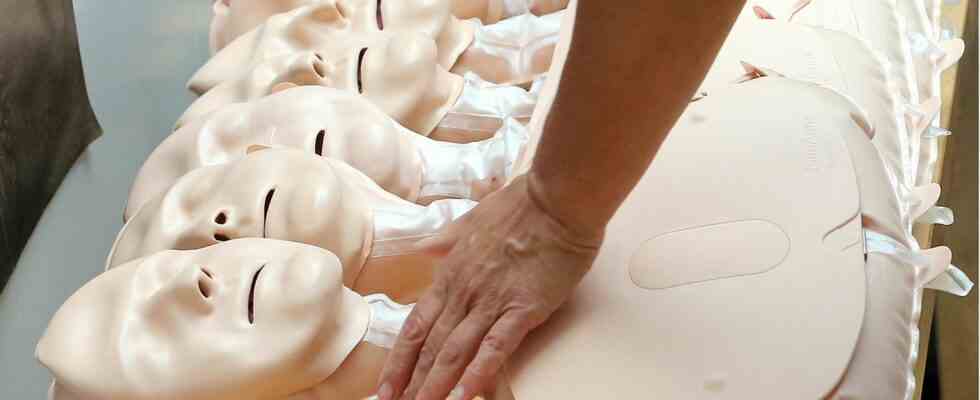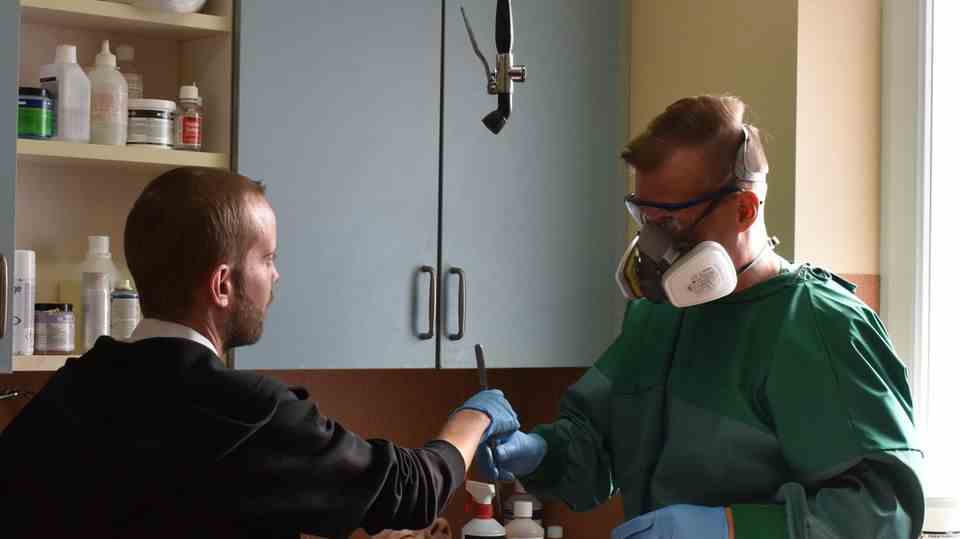“The Unknown from the Seine” is a young girl who is said to have drowned in Paris at the end of the 19th century. Her supposed death mask served as a template for the “Resusci Anne” resuscitation doll. However, the veracity of the legend is questionable.
Her eyes are gently closed, her skin is smooth, her cheeks are round and full. Hair parted and tied at the nape of the neck. She seems young, maybe even a teenager. Her identity has never been clarified, but her face is known around the world. The young woman is said to have drowned in the Seine in Paris at the end of the 19th century. Her death mask became a coveted decorative item throughout Europe – and the template for the “Resusci Anne” resuscitation doll. But there are doubts about the story.
The unknown from the Seine is a “face full of mystery”
The young woman is said to have been around 20 years old when she was found in the Seine. Since no external violence could be detected, according to “Deutschlandfunk” it was concluded that it was a suicide. It was customary at the time to publicly display dead bodies that could not be identified in the hope that someone would recognize them. The Paris morgue was then located just behind Notre Dame Cathedral, on the edge of the island in the Seine, l’Ile de la Cité. According to a report by the Guardian, the bodies were placed on black marble slabs in the morgue window. A morbid fascination apparently emanated from the place – it was a popular destination for passers-by and even families.
The unknown drowned woman was also seen there. But no one seemed to know or miss her. Such as the “Southgerman newspaper” reported, the pathologist who examined the woman was said to have been so fascinated by her face that he had a “moleur”, a moulder, make a plaster cast. Such death masks “retain the last, apparently authentic facial features of a person briefly after death,” explains this Museum of Sepulchral Culture. The special thing about the woman’s face, a “face full of puzzles”, was her smile. A light, blissful smile similar to what Albert Camus described as a “drowned Mona Lisa”. A smile that over the years has inspired poets, artists, authors.
Death masks became a popular decoration for homes in Europe
According to the plaster cast, the “Mouleurs” are said to have offered the mask for sale in front of their workshops on the left bank of the Seine. Again “Guardians” writes, the face of the young woman “was immediately noticed between the death and life masks of famous men like Beethoven and Oliver Cromwell”. The demand for the art object increased. According to the “Süddeutsche Zeitung” it was the plaster workshop Lorenzi in the Rue Racine 19, which started mass production.
A veritable cult arose around the death mask. The face became a cult object, particularly in artistic circles and among Parisian bohemians, decorating almost every apartment and studio. As a piece of furniture, the mask first became a popular decorative object in France and then throughout Europe. As a muse, she inspired numerous writers and artists who created imaginary stories and identities for the girl.
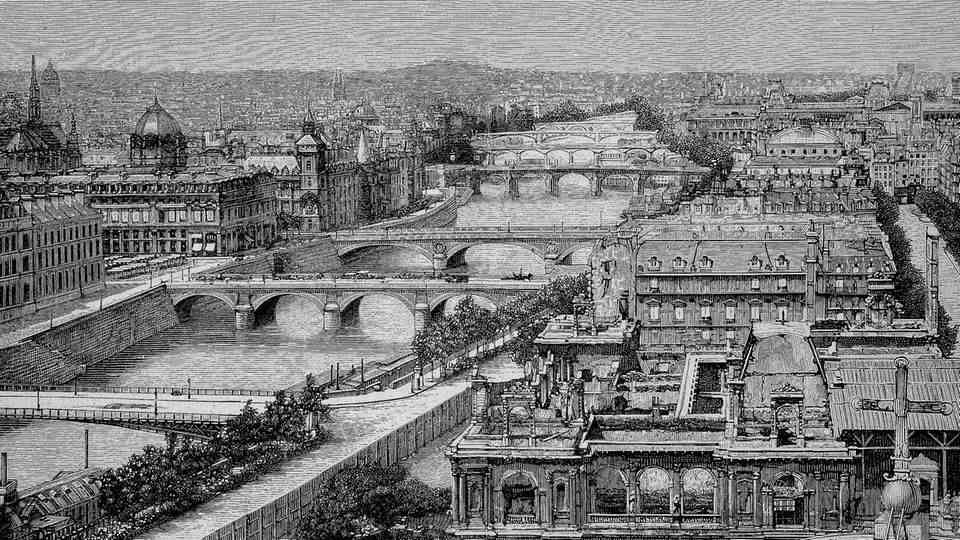
Paris late 19th century. The “unknown” is said to have been pulled out of the water on the Quai du Louvre
© H. Tschanz-Hofmann / Imago Images
Among them Rainer Maria Rilke, who once worked as a secretary for a sculptor in Paris and regularly passed by the workshops with the masks on display. In his novel “Notes of Malte Laurids Brigge” he mentions the woman’s face “because it was beautiful, because it smiled, because it smiled so deceptively, as if it knew.” According to BBC The death mask first appeared in a work in 1899, in Richard Le Gallienne’s “Worshipper of the Image”. It is about a young poet who is enchanted by the image of the dead and dies from it.
Whether the facial print comes from a dead person is questionable
In the comedy “An Unknown Woman from the Seine” by Ödön von Horváth, the young woman is portrayed as a seductress who witnesses a robbery and murder. In the novella “The Unknown” by Reinhold Conrad Muschler, she becomes an orphan girl who drowns after an English aristocrat seduces and then abandons her. In addition to books, the legendary face is also at the center of a number of philosophical writings and poems. The philosopher Maurice Blanchot wrote of a girl “who, however, was enlivened by such a relaxed, happy smile […]that one might have thought she had entered the water in a moment of great bliss.”
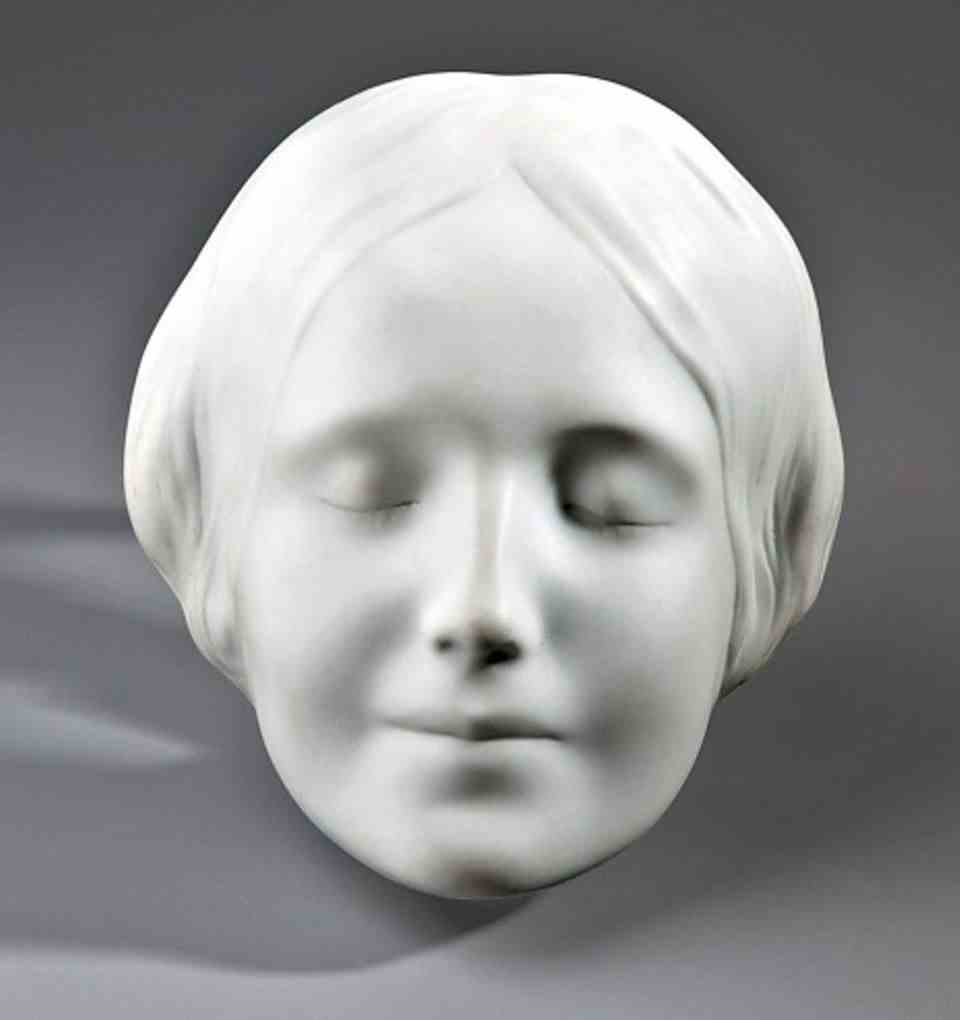
A porcelain specimen exhibited by the Museum of Sepulchral Culture dedicated to the themes Dying, death, burial, mourning, commemoration dedicated
© Museum for Sepulchral Culture Kassel, picture archive
The cultural hype surrounding the imprint of the young girl’s head lasted for several decades. Only then did doubts arise about the veracity of the story. Today it is considered controversial whether the facial impression actually goes back to a dead person or whether it is the work of a sculptor. Several experts, including emergency medical professionals, have noted that the faces of drowned victims do not appear as peaceful as those of the “Seine Unknowns”. The flawless face simply does not fit a drowned corpse. The BBC interviewed the Brigade Fluviale, the Parisian river police. “Everyone we find in the water is swollen, they don’t look pretty,” said chief official Pascal Jacquin. Even in a suicide, the body fights to survive to the last. That can be seen on the faces posthumously.
Their identity and history remain a mystery
Hélène Pinet from the Rodin Museum in Paris speaks of a “mystery without a trace”. Speaking to the Guardian, she said: “The facts were so sparse that any writer could project whatever he wanted onto that face.” Claire Forestier, a descendant of the Lorenzi family whose workshop has always been known for the imprints of the dead, reports an immense interest in the history of the unknown. Students keep writing dissertations investigating the case, she tells the Guardian. In these analyses, the allegedly drowned woman was “everything from an Argentine singer to a French farmer”.
picture book
“Live again”: moving portrait photos show the dying before and after death
The young woman’s identity remains a mystery, but Claire Forestier is certain of one thing: “There’s just no way the cast was taken from a corpse. It would be impossible to take such a perfect face from a dead woman. ” According to Forestier, the round cheeks and smooth skin suggest that the girl could have been no more than 16 years old – and that she was alive at the time of the print. Michel Lorenzi, another descendant of the mask manufacturer, even suspects a professional model behind the “unknown from the Seine”. The “Süddeutsche Zeitung” mentions a study that leads to a gypsum manufacturer in Hamburg. He is said to have taken his daughter’s face as a model for the mask.
Rescue Doll Gets Mysterious ‘Unknown’ Face
How much truth there is in the legend remains an open question. Today, the woman’s face is present all over the world – in the form of the rescue doll “Anne”, which is revived every day in first-aid courses. In the mid-1950s, doctors wondered how to practice cardiac massage. As the “Süddeutsche Zeitung” reports, Peter Safar, the doctor who established the resuscitation techniques, initially stunned volunteers as exercise candidates. Then the idea for a plastic doll came up. He turned to Asmund Laerdal, a Norwegian toy manufacturer who, according to the BBC, specialized in making soft plastic children’s dolls and model cars.
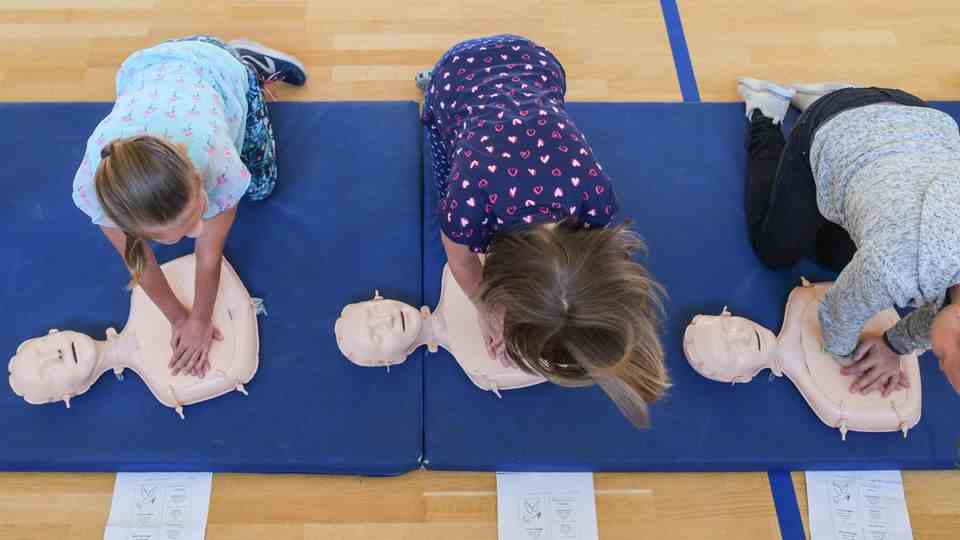
First aid exercise at the “Resusci Anne”. The male version is called “Resusci Andy”. Dolls representing children, “Resusci Baby”.
© Patrick Pleul / Picture Alliance
The rescue manikin should look as realistic as possible, since Laerdal assumed that people would then be more motivated to do the exercise. According to the Guardian, he deliberately made the character feminine because the Norwegian believed men would not want to perform the mouth-to-mouth relationship on a doll of their own sex. According to “Deutschlandfunk” The toy manufacturer is said to have remembered the death mask that hung in his grandparents’ living room at the time. He transferred the face of the “unknown” to his first aid doll.
In the beginning, the plastic figure was very similar to its model, according to an article in the specialist magazine “British Medical JournalSince 1960, the “Resusci-Anne” (“Resuscitation”, English for “Reanimation”) has been a life-size, full-body manikin simulating an unconscious patient millions of people around the world practice heart-lung massages and mouth-to-mouth resuscitation, which is why the “unknown from the Seine” is often referred to as the most-kissed woman in the world.
Sources: kind, BBC“British Medical Journal“, “Deutschlandfunk“, Museum of Sepulchral Culture“New York Times“, “Southgerman newspaper“The Guardians“

